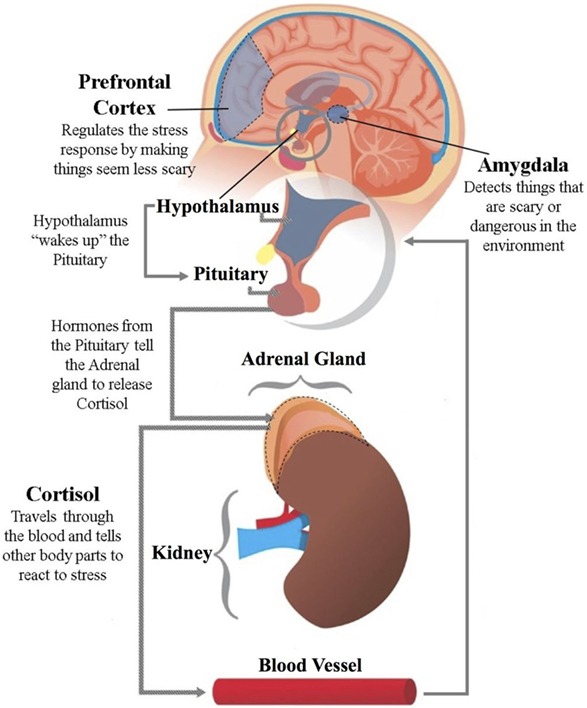Source: https://sharpbrains.com/blog/2020/04/07/on-world-health-day-2020-lets-discuss-the-stress-response-and-the-general-adaptation-syndrome-2-3/

The hypothalamus–pituitary–adrenal (HPA) axis acts to release cortisol into the blood stream, as cortisol calls the body into action to combat stress. When high amounts of cortisol interact with the hypothalamus, the HPA axis will slow down its activity. The amygdala detects stress, while the prefrontal cortex regulates our reactions to stress. Source: Bezdek K and Telzer E (2017) Have No Fear, the Brain is Here! How Your Brain Responds to Stress. Front. Young Minds. 5:71. doi: 10.3389/frym.2017.00071
_______
[Editor’s note: Continued from yesterday’s <a href="https://sharpbrains.com/blog/2020/04/06/explor…
Source: https://sharpbrains.com/blog/2020/04/07/on-world-health-day-2020-lets-discuss-the-stress-response-and-the-general-adaptation-syndrome-2-3/

The hypothalamus–pituitary–adrenal (HPA) axis acts to release cortisol into the blood stream, as cortisol calls the body into action to combat stress. When high amounts of cortisol interact with the hypothalamus, the HPA axis will slow down its activity. The amygdala detects stress, while the prefrontal cortex regulates our reactions to stress. Source: Bezdek K and Telzer E (2017) Have No Fear, the Brain is Here! How Your Brain Responds to Stress. Front. Young Minds. 5:71. doi: 10.3389/frym.2017.00071
_______
[Editor’s note: Continued from yesterday’s <a href="https://sharpbrains.com/blog/2020/04/06/explor…
What Do You Think?
comments
